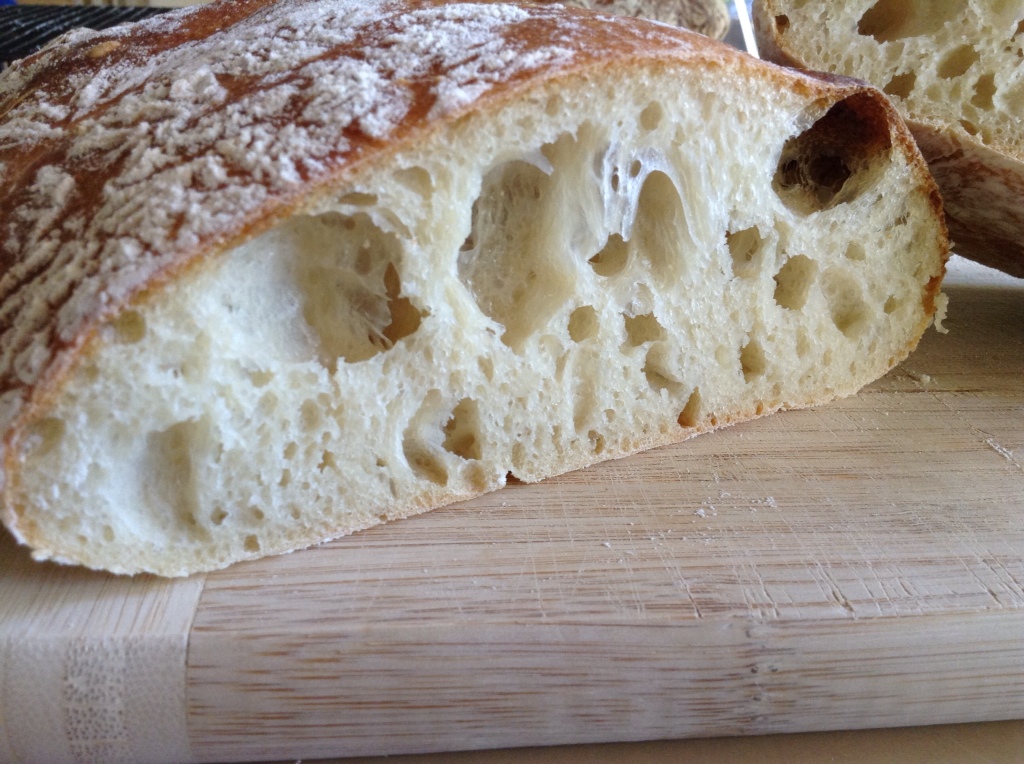For some time I have been wanting to bake ciabatta. Every attempt I have made has been a flop (literally — the loaf has collapsed).
The trick, apparently, is to use a very moist dough (about 78% hydration) and high protein (gluten) flour. Moist dough is very sticky and difficult to handle, but using high protein flour helps the dough stick to itself instead of the bench and you. Other tricks include doing most, if not all, of the kneading in the bowl and using an almost non-stick plastic bowl scraper. The scraper can be used in place of your hand to fold the dough. Old-style heavy-handed (and tiring) kneading is not necessary, simply fold the dough onto itself whilst turning the bowl a little between folds.
I found a recipe on Amy’s Bread website and some handy videos showing how to handle the dough without getting it stuck to your hands or the bench.
The recipe uses dry yeast and since I’m more interested in sourdough I modified the recipe to use mainly sourdough with some dried yeast (I chickened out on using all sourdough for fear it might not bounce enough. Maybe next time). The recipe uses US measures, but thankfully includes metric weights. It is absolutely essential, when baking bread, to weigh all the ingredients – things like cups and spoons vary in size around the world.
Ciabatta dough waiting to be baked
- I replaced the dry yeast in the poolish with 1 tablespoon (20 g) of 100% hydrated sourdough starter.
- In the poolish, I combined the two amounts of water into 227 g cold water. I don’t think the sourdough starter would like the very warm water.
- In the main ingredients I used 2 teaspoons of plain salt.
- The water regime is pretty fiddly. I just used 1 cup of hot water in a baking tray at the bottom of the oven.
- I baked the loaves for 35 minutes.
- Sourdough takes a little longer to rise. Maybe allow up to 90 minutes.




